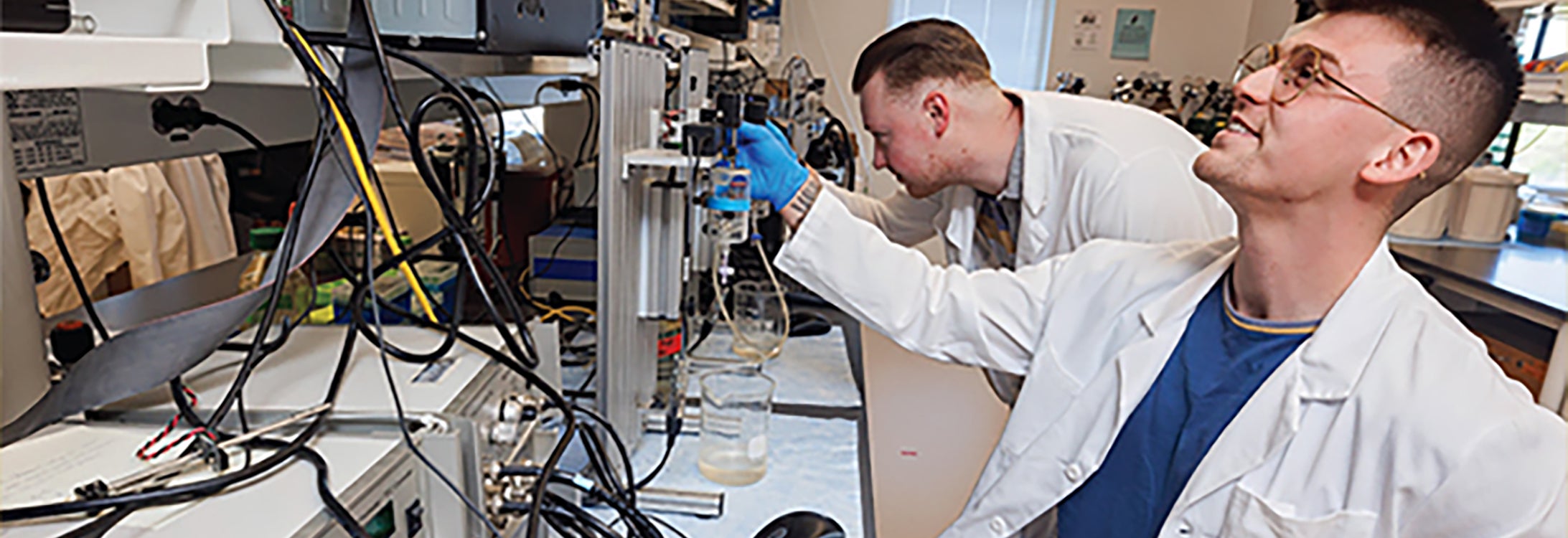Research team identifies new type of muscle
ECU physiologists and graduate students – as well as a high school student – have worked together over the past couple of years to discover and describe a muscle in the foot that’s different from other muscles because of how it behaves without oxygen. Their next step is to figure out why.
Their work was published in March in the journal Function and has been funded by a three-year, $377,500 grant from the National Institutes of Health.
Skeletal muscles are used for breathing, movement and temperature regulation – activities that consume a lot of oxygen from blood, said Espen Spangenburg, professor of physiology and chair of the Department of Anatomy and Cell Biology at the Brody School of Medicine. One, the flexor digitorum brevis, FDB for short, is in the feet of mammals. Researchers use FDB in experiments because it’s amenable to different types of physiological measures.
Several years ago, Spangenburg helped ECU physiologist Joseph McClung with a study looking into therapies for peripheral arterial disease. The study called for reducing blood flow to the extremities of subjects in preclinical models. Because FDB is the muscle farthest from the heart, it should have been the first to show signs of damage from the blood flow restriction.
But it didn’t. Spangenburg knew he needed to figure out why. Working with ECU physiologist Kelsey Fisher-Wellman and assisted by graduate students such as Everett Minchew, who completed his doctorate in December, the team screened thousands of proteins and identified a number of proteins unique to FDB.
Spangenburg still had to compute the data, which he was doing at home one day when his son, Quincy, a student at D.H. Conley High School in Greenville who’s taken college calculus, asked what he was working on.
Quincy said the data looked like a polynomial function, and he thought he could use a tangent line to calculate it. He took the data and returned an hour and a half later with a solution.
“We had to make some adjustments to his approach, but he literally developed a method for how we would assess the data,” Spangenburg said. “But then I didn’t know what to do, because typically when somebody adds to the research like that, you would add them to the paper.”
But how would it look for his son to be listed as an author? Spangenburg consulted some colleagues. “And they all came away with the same thing,” he said. “‘Could you have done it?’”
Not the way Quincy did it, so he added him as a co-author.
The findings are causing researchers at other institutions to question assumptions about how the body works.
“I have one guy who just sent me a whole experiment with the FDB muscle and asked, ‘Am I wasting my time? Like should I even be doing this?’” Spangenburg said. “This finding could change what we put in textbooks down the road because this muscle is an exception to the rule. And that means that there might be other exceptions. It may not be the only one.”
– Benjamin Abel
